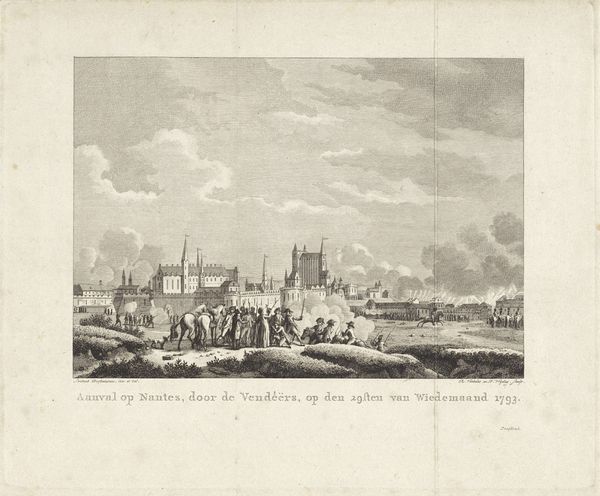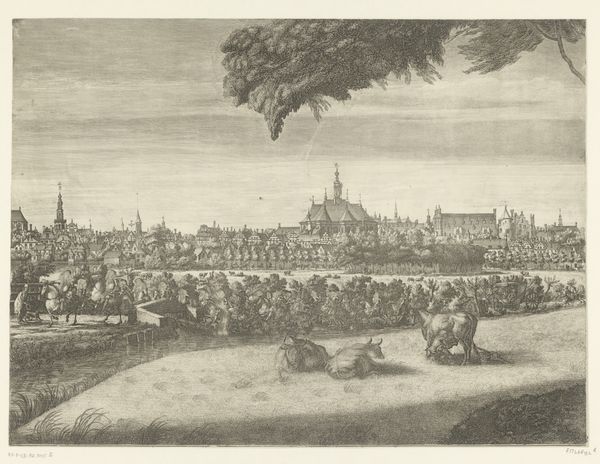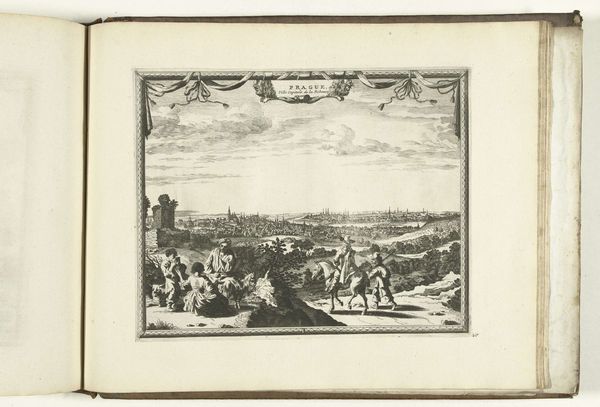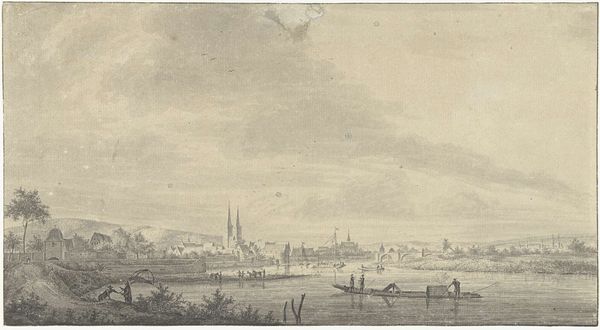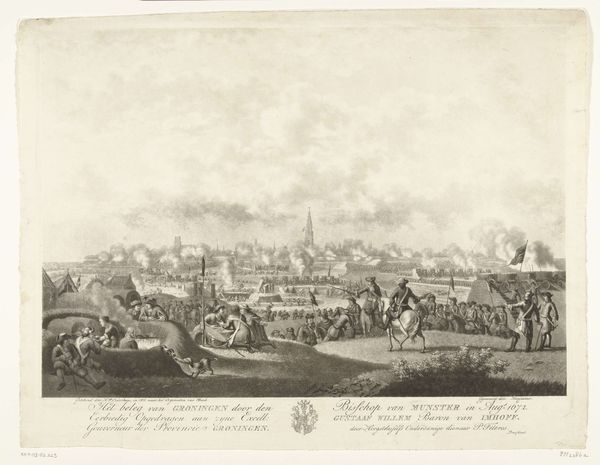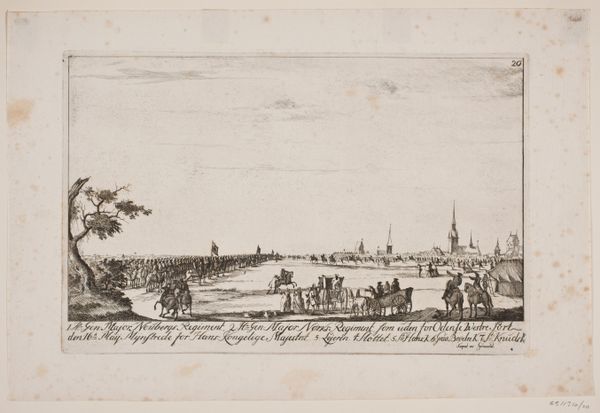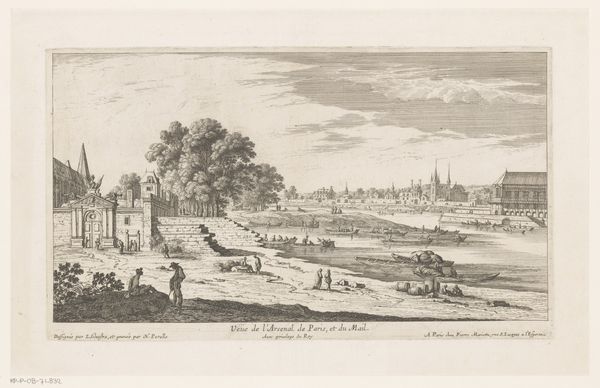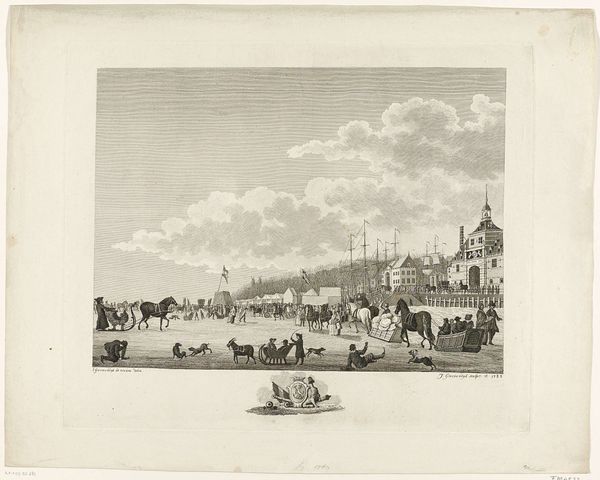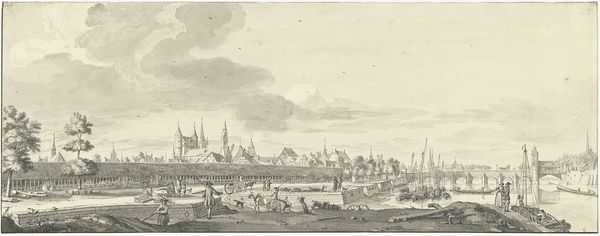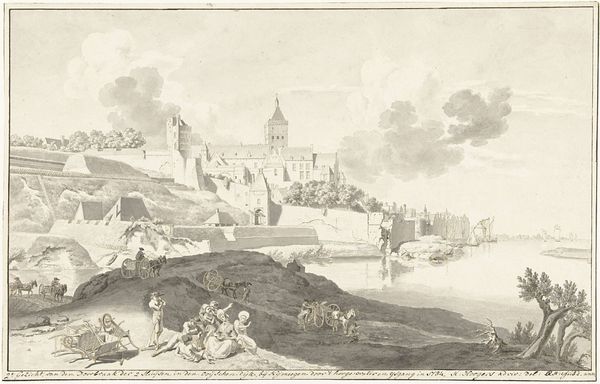
Dimensions: height 347 mm, width 464 mm
Copyright: Rijks Museum: Open Domain
Curator: Let's delve into "Beleg van Groningen, 1672," an engraving executed around 1815, currently housed in the Rijksmuseum. Editor: My first impression is the density. So many tiny figures embroiled in this... grey chaos. It gives off a strange sense of overwhelming order. Curator: That ordered chaos reflects the socio-political underpinnings of 17th-century warfare. The print historicizes the siege, imbuing it with a sense of national pride. It also perpetuates specific power dynamics related to land ownership and military prowess. Editor: Precisely. Look at the prominence given to the central church tower amidst the conflict; its visual strength subtly signifies more than just physical endurance, right? Curator: Definitely, church towers and fortifications of the era symbolized stability amid societal conflict. The siege itself, though, represented deep-seated religious and political divisions within the Netherlands. This engraving serves as propaganda of the victors to downplay some harsh historical realities. Editor: Yes, one must consider the engraving medium; while seemingly neutral, prints like these amplified particular political voices—those wealthy enough to finance them, cementing historical narratives for the populace. Curator: Consider the symbolism surrounding the attacking soldiers. Are they really champions of freedom, as the Dutch narrative implies? By not portraying much details on the opposing side the artist uses propaganda in his visual representation, right? Editor: It’s quite potent. You also feel how, artistically, this is part of an ongoing tradition in representing conflicts of the time. Curator: True. While presented as an historical artifact, it acts as another way of reaffirming values, that would otherwise go unnoticed or might be viewed differently with the passing of time. Editor: Looking closely makes you wonder about the countless stories not told or silenced here. History paintings usually are never that neutral after all. Curator: Exactly. This artwork is about more than the siege. It's about the shaping and weaponizing of historical memory.
Comments
No comments
Be the first to comment and join the conversation on the ultimate creative platform.
